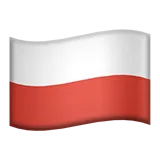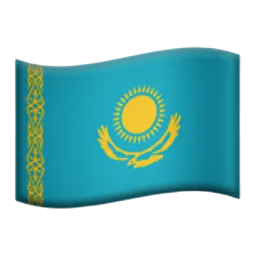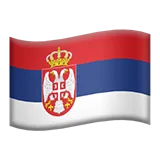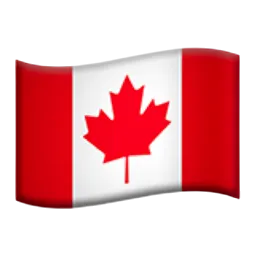Alex Markin is Creative Director at JetXR, JetStyle’s department working solely with VR, AR and MR. For several years now, JetXR has been developing virtual reality rides. They have proved to be effective in the spheres of entertainment and tourism. To give a broad idea how VR rides work and perform, we asked Alex a few questions. We’re happy to share the interview with you:
Let’s talk about the basics. What is a VR ride?
Alex: It’s an attraction typical for amusement parks. Rides are similar to roller coasters, but are experienced solely via VR equipment, as the visitor is immersed in virtual reality. Apart from headsets, VR can feature extra hardware for more sensory experiences.
For instance, we generally use various types of rigs to control the movement of the VR chairs. Also, wind machines — a rig with fans and controllers. To make it all work, a related API communicates the necessary speed and direction of the wind, so that the controllers adjust the speed and the direction of fans.
Other types of rigs splash water on you. Of course, in this case we have to ensure the headsets are waterproof. A heatwave rig imitates a dragon’s breath. A new hyped-up invention is the ultrasonic emitter: an array of several ultrasonic radiators creates the feeling like somebody’s touching your face. This one’s awesome for imitating a kiss or a spider on your face. However, I’m not sure this kind of interaction has a positive impact on a personal psychological state — it seems too intense. Whether or not to use such a setup is totally at the developers’ discretion.
How does JetXR develop the rides? Can you describe the process in more detail?
Alex: The core features of this type of entertainment is its relation to a specific place. Thus, we put much of our effort in development to make the ride super realistic and recognizable. However, if we simply create a 3D copy, it would be so boring. Virtual reality gives us full freedom of imagination. We add fantasy and fun into each of our rides. If I divide the process into specific steps, there will be 4 of them:
1/ Plot development
At this stage we conduct a briefing with the client — the owners of a touristic spot or amusement park — and highlight the most crucial ‘stops’ during the ride. During this stage we decide, which real-life sights and city parts will be included into the ride. Then we work on the fantasy part of the ride and outline the future creative concept of the ride. We ask ourselves a question: what will really fascinate the visitors and at the same time transfer the location-specific vibe?
2/ Scouting
A scout makes a super-detailed photoshoot of the location along the ride trajectory. We don’t use photogrammetry*, as today’s technologies do not allow creating 3D models which are detailed and optimized enough. Real-time rendering is a heavy process even for high-power computers and video cards. According to our experience, drone-made 3D scans slow down the rendering process; moreover, they don’t look so impressive.
*Photogrammetry is the technology of obtaining reliable information about physical objects and the environment through the process of recording, measuring and interpreting photographic images and patterns of electromagnetic radiant imagery and other phenomena (Wiki)
3/ 3D modeling
JetXR’s 3D designers process thousands of photographs and Google maps. The core challenge at this point is to reproduce all of the elements of our location in 3D. It means that we have to build a part of a city ‘from scratch’. At this stage, we often refer to existing photogrammetric images because it helps us figure out the correct sizes of the objects. This has proven to be an incredible time & resource saver.
Two factors that facilitate the process of modeling:
Our rides are the roller coaster type, so users move very fast. Thanks to this, we find a reasonable balance between our designing resources and the degree of detail of the objects.A ride is not an interactive experience: visitors don’t choose where to go and the route is always the same. We optimize the modeling process by visualizing only the front sides of the elements, the ones which can be seen along the way.A bit of backstage on how we create the middle-distance buildings, ’cause recreating them in 3D was quite a challenge. Roller coasters are high, and they give you a panoramic view of the city. Middle-distance buildings function as the ‘filling material’ for the realistic picture of the location. You’ll never recognize them during the ride, but these houses are supposed to resemble the real city. In addition to that, we work hard to make them match the other elements of the environment to create the image of a big detailed space.
For better visualization we either use open geo data or purchase satellite datasets; for example, we bought a 25x25 km piece of the city to build Amsterdam in VR. An extra step of the process is to edit it with AI tools to achieve higher resolution.




When we worked with the ride around Scheveningen, we used a free NASA map. Scheveningen is a small resort town with beautiful nature. During the ride, you never go up too high, so a low-resolution NASA map was enough to ensure a realistic picture.
Why is this stage so important?
Alex: Realistic visualization of the surroundings is key: we don’t want the ride to look like a cheap cartoon. It should feel like a real thing; a visitor has to experience the joy of recognition.
Also, the rides we develop have one common plot feature: it starts in one real place and finishes there too. In VR, you’re right where you were before you put on the headset, only this place is magical. The trick wouldn’t work if the visuals were not consistent and realistic.
4/ Development
At this stage, we integrate the VR app with a high-power gaming computer and a VR headset. We also set up remote control access for the ride’s operator to switch it on from a mobile phone, and statistical data collection tools — so that the owners keep track of each chair’s performance.
What’s so special about VR rides for the audience?
ALex: If we compare roller coasters and VR rides, we’ll see that the first are great if you’re looking for extraordinary physical sensations. However, you’ll easily find an adrenalin source in both. As for VR rides, it’s all about the virtual magic you cannot find in real life. Dragons, sharks, tornadoes — whatever comes to your creative mind can be created in VR.
And what’s the profit for businesses?
A VR ride is ideal for entertainment spheres, tourism and monetizing spots with high visitor flow. Rides increase the revenue of these places. Our VR ride for Amsterdam’s ADAM tower proves this: it took the ride 3 months to pay off its costs.
Rides usually have high traffic capacity: only 2 minutes per 1 session. Additionally, they are autonomous: one operator works with several customers at the same time. There is a mobile dashboard an operator can use to launch and finish the rides. Thus, you don’t need a lot of stuff to maintain the ride spot.
***
If you’re developing a business in the spheres of entertainment and tourism, you should consider VR rides as a potential way to increase profits and visitor traffic. Alex is ready to give a free consultation where he can answer all your questions and give a preliminary estimation of how much resources your project can take. Contact us via orders@jet.style








